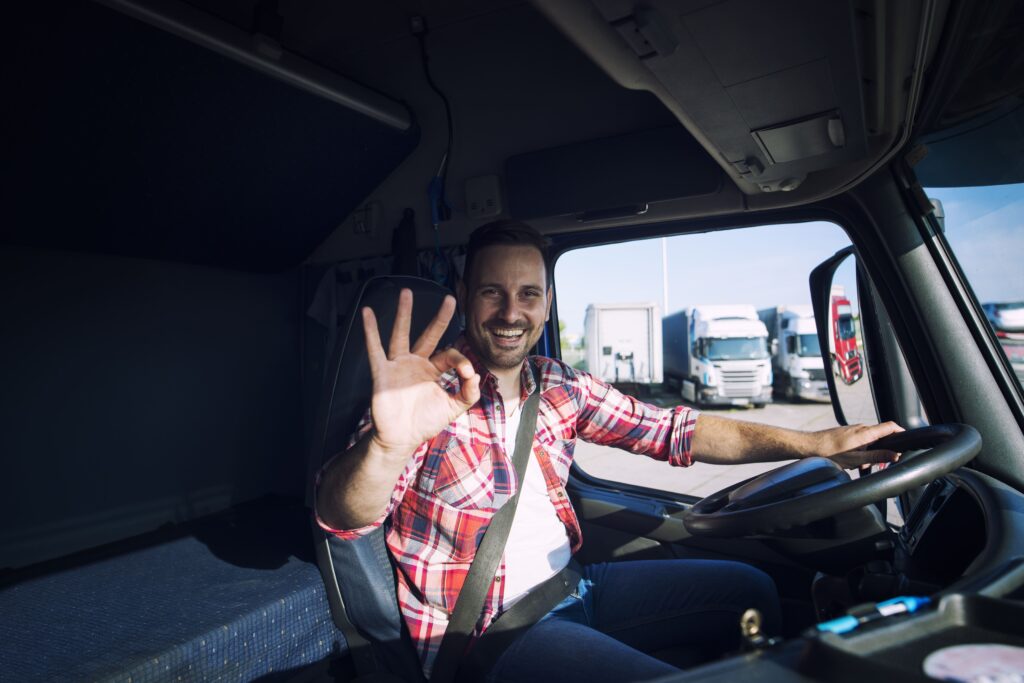Thinking about venturing into the world of transportation and logistics with your own hotshot trucking startup? You’re not alone! This fast-growing segment of the trucking industry offers lower barriers to entry than traditional semi-truck operations while providing excellent income potential for motivated entrepreneurs. Whether you’re an experienced driver looking to become your own boss or an entrepreneur seeking a profitable business opportunity, starting a hotshot trucking company could be your ticket to success in the transportation sector.
The hotshot trucking business involves using medium-duty trucks (typically Class 3-5) to haul time-sensitive or urgent freight that doesn’t require a full-sized semi. With lower startup costs and fewer regulatory hurdles than traditional trucking operations, it’s no wonder more and more entrepreneurs are exploring this opportunity.
In this comprehensive guide, we’ll walk through everything you need to know to launch your successful hotshot trucking business—from understanding the market and securing the right equipment to navigating regulations and building a profitable client base.
What is Hotshot Trucking and Why Consider It as a Business?
Hotshot trucking typically involves using pickup trucks (usually 1-ton dually trucks) with flatbed trailers to transport smaller, time-sensitive loads. Unlike traditional commercial trucking that requires Class 8 semi-trucks, hotshot operations use smaller vehicles, making this niche more accessible to new entrepreneurs looking to enter the transportation industry.
Some key advantages of starting a hotshot trucking business include:
- Lower initial investment – Equipment costs for hotshot operations are significantly less than traditional semi-truck operations
- Less regulatory burden – While still regulated, hotshot operations face fewer restrictions than Class 8 commercial vehicles
- Flexibility – Ability to handle diverse loads and serve various industries
- Growing demand – Increasing need for expedited, smaller freight deliveries in numerous industries
The hotshot sector primarily serves industries like construction, oil and gas, agriculture, and manufacturing—essentially any business that needs urgent delivery of equipment, parts, or materials that don’t require a full-sized semi-truck. According to IBISWorld research, the specialized freight trucking market continues to grow steadily, creating opportunities for new entrants in the hotshot segment.
Essential Steps to Launch Your Hotshot Trucking Startup
Starting a successful hotshot business requires careful planning and execution. Let’s break down the essential steps to get your operation on the road:
1. Research and Develop a Business Plan
Before investing in equipment or pursuing licensing, conduct thorough market research. Determine if there’s sufficient demand in your area, identify potential competitors, and pinpoint industries you might serve. A comprehensive business plan should include:
- Market analysis and target customer identification
- Startup and operational cost projections
- Revenue forecasts and break-even analysis
- Marketing and customer acquisition strategies
- Growth plans and potential service expansions
Your business plan will serve as your roadmap and may be necessary if you’re seeking financing for your hotshot trucking company startup.
2. Choose a Business Structure
Selecting the right business structure is crucial for liability protection, taxation, and operational flexibility. Common options include:
- Sole Proprietorship: Simplest structure but provides no liability protection
- Limited Liability Company (LLC): Provides liability protection while maintaining tax simplicity
- Corporation: Offers robust liability protection but involves more complex taxation and paperwork
Most hotshot trucking entrepreneurs opt for an LLC structure as it provides personal asset protection while maintaining relatively simple tax filing. Consider consulting with a business attorney to determine the best structure for your specific situation.
3. Handle Legal Requirements and Permits
Compliance with transportation regulations is non-negotiable. Here’s what you’ll need:
- Obtain a USDOT Number – Required for interstate commerce and can be obtained through the Federal Motor Carrier Safety Administration (FMCSA)
- Secure Motor Carrier (MC) Authority – Needed to transport regulated commodities
- Commercial Driver’s License (CDL) – May be required depending on your truck’s weight ratings
- International Registration Plan (IRP) – For interstate operations
- International Fuel Tax Agreement (IFTA) – For fuel tax reporting across state lines
- BOC-3 Filing – Designates process agents in states where you operate
- Heavy Vehicle Use Tax (Form 2290) – For vehicles exceeding certain weight limits
Additionally, you’ll need proper business licenses in your state and local jurisdiction. Consider working with a transportation compliance service to ensure you’ve covered all requirements for your specific operation.
Selecting the Right Equipment for Your Hotshot Business
Your equipment choices will directly impact your operational capabilities and profitability. Let’s examine the essentials:
The Right Truck
Most hotshot operations use heavy-duty pickup trucks, typically:
- Class 3 Trucks (14,001-16,000 lbs GVWR) – Like Ford F-350, Chevrolet 3500, or RAM 3500
- One-ton dually trucks – Offering more stability and higher towing capacity
- Diesel engines – Preferred for better fuel efficiency and towing capability
When selecting a truck, consider factors like towing capacity, fuel efficiency, maintenance costs, and reliability. While new trucks offer warranties and the latest features, quality used trucks can significantly reduce your startup costs.
Trailer Selection
Your trailer choice will depend on the types of loads you plan to haul:
- Flatbed trailers – Most versatile option, typically 30-40 feet long
- Dovetail trailers – Include a sloped rear section for easier loading
- Gooseneck trailers – Provide better weight distribution and stability than bumper pull
- Enclosed trailers – For weather-sensitive or high-value cargo requiring additional protection
Your trailer selection should match your target market’s needs and stay within your truck’s towing capacity specifications.
Essential Equipment and Accessories
Beyond your truck and trailer, you’ll need:
- Proper tie-downs, chains, and straps
- Tarps for load protection
- GPS navigation system
- Electronic logging device (ELD) if required
- Smartphone with reliable data plan
- Basic tools and emergency equipment
Don’t skimp on quality for these essential items—your safety and ability to secure loads properly depend on them.
Financing Your Hotshot Trucking Startup
Determining how to fund your business is a critical decision. Most hotshot operations require $50,000-$100,000 in startup capital, depending on equipment choices and other factors.
Financing Options
Consider these funding sources:
- Personal savings – The most straightforward but may limit your initial resources
- Equipment financing – Loans specifically for truck and trailer purchases
- SBA loans – Government-backed loans with favorable terms for small businesses
- Traditional bank loans – May require excellent credit and detailed business plans
- Equipment leasing – Lower initial costs but higher long-term expense
Understanding Operating Costs
Beyond startup expenses, account for ongoing costs:
- Fuel (likely your largest expense)
- Insurance (commercial auto, cargo, liability)
- Maintenance and repairs
- Licensing and permits
- Phone and communication costs
- Accounting and tax services
- Load board subscriptions
Create a detailed financial projection that accounts for these expenses to ensure you have adequate working capital for at least the first 3-6 months of operation.
Finding Loads and Building Your Customer Base
The most crucial aspect of your hotshot trucking startup will be securing consistent, profitable loads. Here’s how to build a reliable customer base:
Load Board Utilization
Load boards are online marketplaces where shippers and brokers post available freight. Popular options include:
- DAT Load Board
- Truckstop.com
- 123Loadboard
- HotShot Freight
- Direct Freight
While load boards are excellent for finding initial work, relying solely on them typically yields lower profit margins due to competition and broker fees.
Building Direct Client Relationships
For long-term success, focus on establishing direct relationships with:
- Construction companies – Need equipment and materials delivered to job sites
- Manufacturing facilities – Require time-sensitive parts and components
- Oil field services – Frequently need equipment transported between sites
- Agricultural operations – Seasonal equipment and supply transportation needs
- Auto dealerships – Vehicle transport between locations
Direct clients typically offer better rates and more consistent work than loads found through brokers on load boards.
Marketing Your Hotshot Business
Implement these marketing strategies:
- Create a professional website highlighting your services and equipment
- Develop business cards and brochures for in-person networking
- Establish profiles on LinkedIn and industry-specific social platforms
- Join local business associations and attend industry events
- Consider targeted digital advertising in your service area
- Request testimonials from satisfied clients for social proof
Remember that reliability, professionalism, and communication are your most powerful marketing tools in the transportation industry.
Managing and Growing Your Hotshot Trucking Operation
Once operational, focus on efficiency and strategic growth:
Technology and Software Solutions
Leverage technology to streamline operations:
- Transportation Management Systems (TMS) – Handle dispatching, billing, and documentation
- Accounting software – Track expenses and revenue
- Electronic logging devices – Comply with hours-of-service regulations
- Route optimization tools – Minimize deadhead miles and maximize efficiency
- Mobile apps – Manage documentation, communications, and load searching on the go
Growth Strategies
As you establish your business, consider these growth opportunities:
- Adding equipment – Expand your fleet with additional trucks and trailers
- Hiring drivers – Scale beyond what you can personally drive
- Specialized services – Target niche markets with specific equipment or expertise
- Geographic expansion – Extend your service area strategically
- Diversification – Consider related services like warehousing or local delivery
Growth should be calculated and strategic—many hotshot businesses fail by expanding too quickly before establishing solid operational processes and financial stability.
Overcoming Common Challenges
Be prepared to navigate these typical obstacles:
- Seasonal fluctuations – Many hotshot markets experience significant seasonal variations
- Fuel price volatility – Implement fuel surcharges to protect your margins
- Regulatory changes – Stay informed about evolving transportation regulations
- Cash flow management – Establish payment terms that support healthy cash flow
- Competition – Differentiate through reliability, specialization, or service quality
Conclusion: Your Hotshot Trucking Success Journey
Starting a hotshot trucking business requires careful planning, appropriate equipment selection, regulatory compliance, and effective marketing. While the initial learning curve may be steep, this industry offers tremendous potential for entrepreneurs willing to deliver consistent, reliable service.
The key to success lies in understanding your operational costs, building direct client relationships, and focusing on efficiency in all aspects of your business. By following the guidelines outlined in this article, you’ll be well-positioned to launch and grow a profitable hotshot operation in this dynamic transportation sector.
Ready to transform your entrepreneurial vision into a thriving hotshot trucking operation? We’re here to help you navigate every step of the process, from business formation and equipment selection to regulatory compliance and client acquisition.
Take the next step today! Submit your information through our consultation form, and our team of transportation business specialists will provide personalized guidance tailored to your specific goals and circumstances. Don’t let questions or uncertainty delay your journey to business ownership—connect with us now to accelerate your path to success in the hotshot trucking industry!







